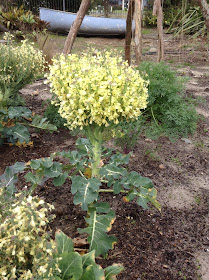Kindergarten is a German word which can be literally translated as 'garden for the children'. And indeed, gardening was one of the prescribed activities of early kindergartens.
Gardening is still a part of our kindergarten curriculum. And like most gardens, ours is a never ending work in progress.
Gardening provides opportunities for children to develop; a positive relationship with nature, to care for and nurture something, patience as they wait for seeds to germinate and plants to grow, and to have some fun while getting a bit dirty.
"Gardening engages children by providing a dynamic environment to observe, discover, experiment, nurture, and learn. Gardens are living laboratories where lessons are drawn from real life experiences and fueled by a child's innate curiosity and enthusiasm, resulting in an environment that encourages them to become active participants in the learning process" kidsgardening.org
At kindergarten the children participate in a range of gardening experiences such as...
Weeding
"There are no gardening mistakes, only experiments." Janet Kilburn Phillips.
So keeping that in mind, here's a look at the latest gardening experiments.
Sowing courgette seeds...
Gardening is still a part of our kindergarten curriculum. And like most gardens, ours is a never ending work in progress.
Gardening provides opportunities for children to develop; a positive relationship with nature, to care for and nurture something, patience as they wait for seeds to germinate and plants to grow, and to have some fun while getting a bit dirty.
"Gardening engages children by providing a dynamic environment to observe, discover, experiment, nurture, and learn. Gardens are living laboratories where lessons are drawn from real life experiences and fueled by a child's innate curiosity and enthusiasm, resulting in an environment that encourages them to become active participants in the learning process" kidsgardening.org
At kindergarten the children participate in a range of gardening experiences such as...
Weeding
Digging...
and planting...
And as hard as we try, sometimes things don't go to plan.
It seemed that the peas didn't want to grow.
 |
| "I think the peas have grown" said Sophia. |
The broccoli grew into bunches of beautiful yellow flowers.
And the cabbages might just be ready in time for Matariki... next year!
So keeping that in mind, here's a look at the latest gardening experiments.
Sowing courgette seeds...
"The garden is a unique place between the natural
environment and the social environment, one where children
can create a meaningful cultural relationship between
the work of humans and the complexities and unknowns
of the natural world" Nimmo & Hallett, 2008.























No comments:
Post a Comment